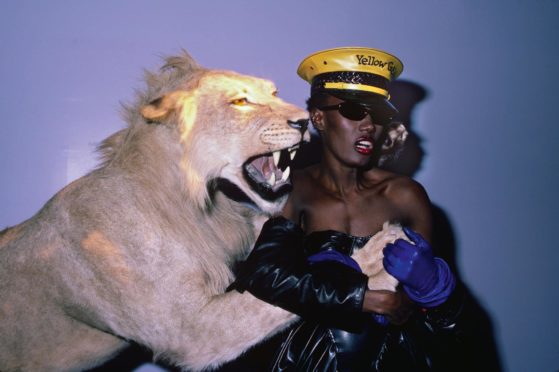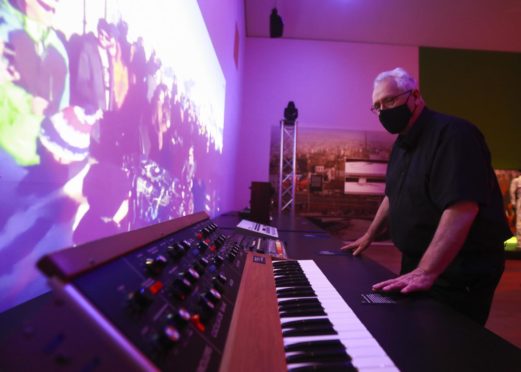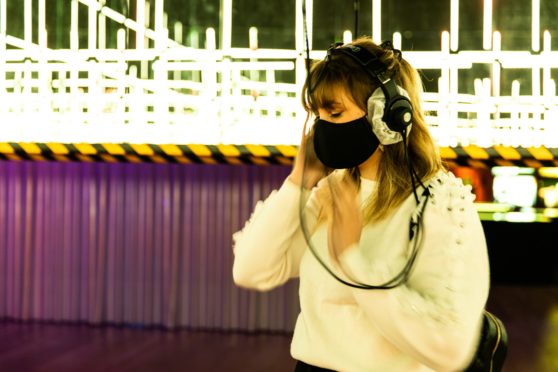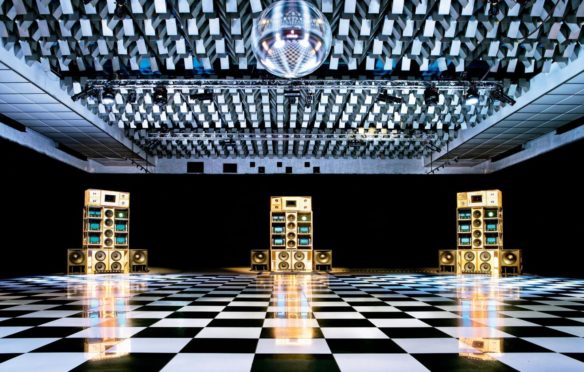Our names were on the list – and we got in.
But what does Night Fever: Designing Club Culture have to offer the dancing queens (and kings) of all eras?
The Courier’s Arts & Entertainment team have their say…
Lorraine Wilson – the 80s clubber
Even though I was still in my 20s, I had all but given up clubbing by 1990.
Maybe we have a window when it’s important to us, when we need be creatures of the night and find our people under the strobe lights.
What Night Fever: Designing Club Culture does is transport us to our place in the clubbing timeline, which here starts in the 1960s.
It also makes us wish that we could have had a taste of every other – oh to have been in Italian clubs at the beginning of the journey. Those chairs!
The exhibition spaces have just that – space to breathe and to stand back and enjoy the lights, the graphics, the installations, the clothes – and the music, of course.
The rooms have life and colour and excitement – something that can be difficult to achieve with some static exhibits, but each has been carefully curated and gives us a greater understanding of how important design is to how we experience clubs – and how they make us feel.
There are moments of sheer bliss like the silent disco where, with headphone covers supplied, you can enjoy clubbing music across the decades in a multi-sensory box.
What Night Fever: Designing Club Culture does is transport us to our place in the clubbing timeline… and makes us wish that we could have had a taste of every other.”
If you’ve missed travelling as much as I have over the past year, then the glimpses into clubbing around Europe and far beyond is a travelogue of night-time culture around the world.
The Scottish section (free to view to all) is a beautifully personal walk down memory lane with memories of the clothes, the sweaty dancefloors, the adventures travelling to clubs in other cities and, maybe the most important of all, the friends that were made in clubs.
And yes, John Travolta looms large in one of the rooms, but luckily, for the next eight months we can have Monday to Sunday Night Fever.
Jen McLaren – the 90s girl
Forget staying in: the museum is the new going out.
This exhibition is the closest thing we’ll be getting get to a club night for a good while – and it all seems comfortingly familiar.
From neon signs and disco lights to the distant rumbling of disco beats coming from various nooks in the exhibition space, you could very well be stepping in there to have a fabulous night out.
Everyone who experiences Night Fever is part of the social history being examined and revisited and my face could easily have been pictured amongst a sweaty late ’90s crowd. Though, I think I got away this time.
It’s hard not to have a little boogie as you hop between the exhibits – even the gallery staff admit keeping still can be a challenge.
From neon signs and disco lights to the distant rumbling of disco beats coming from various nooks in the exhibition space, you could very well be stepping in there to have a fabulous night out.”
As the basslines resonate from different spaces, you enter these environments in the same way you’d explore the lounges of a nightclub hand-in-hand with your pal.
To see a spinning glitter ball and a piece of the floor from Manchester’s old Haçienda club, you realise these are relics from a not-too-distant past.
While I have never been an avid dance club-goer, I know the importance of these scenes to people’s cultural identities, just like the concerts and festivals that shaped mine.
I was always more of a gig girl and could commonly be found in a sweaty mosh pit with a crowd-surfer’s trainer in my face, drenched in a pint someone had lobbed from the back. At least, I hope it was beer.
Rebecca Baird – the non-clubber
I don’t get clubbing.
Twenty-something “zillenial” I may be, but life of the party I am not. I’m a geek. Clubs aren’t for me – or so I thought.
But in the two hours I spent at Night Fever, I got it. I get it.
Clubs, it turns out, are just fantasy world-building exercises on a designer budget.
They’re about fashion and music, architecture and art, all coming together to make a wee, unique world of their own. They’re about details.
In short, they’re just as geeky as me. And this exhibition has something for every geek.
For audiophiles, there is a fascinating display of DJ equipment, from the first compact synthesizers of the seventies to modern-day sampler boards.
Fashionistas can pore over rare Vivienne Westwood corsets; historians will delight in anthropological relics – a scrap of a dancefloor battered with the memories of hundreds of impractical shoes, a rusted safety deposit box from a bygone cloakroom.
Clubs, it turns out, are just fantasy world-building exercises on a designer budget. They’re about fashion and music, architecture and art, all coming together to make a wee, unique world of their own. They’re about details.”
The standout feature for me has to be the interactive dancefloor.
From the outside, it’s a floating box with an array of headphones dangling like a sad silent disco. Sets of legs inside, faces blocked by the walls. Weird.
From inside: a mirrored cage from shoulder-height up, boasting incredible syncopated light shows that seem, thanks to the mirrors, to stretch endlessly into the distance. The headphones contain four eras of music to choose from; and each somehow matches up perfectly with the lights.
And fellow geeks, if you need any more convincing that club culture is for you too, I even learned a new word. “Gesamtkunstwerk” – a total work of art. Honestly, it is.



